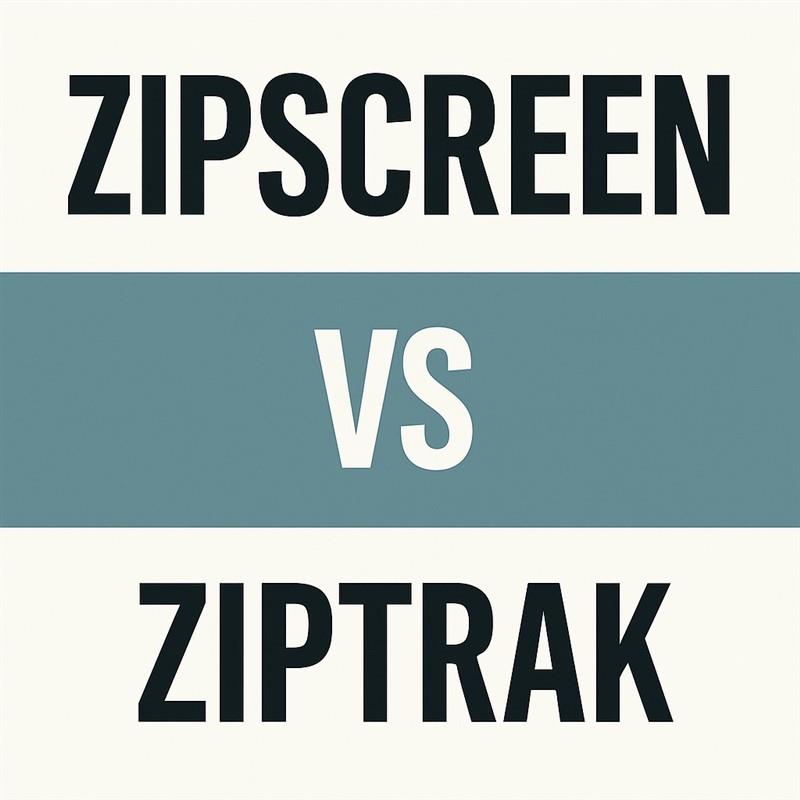Zipscreen vs Ziptrak Outdoor Blinds: Which is Better for Your Home?

When it comes to enhancing your outdoor living area, Zipscreen and Ziptrak blinds are two of the most trusted and popular choices. Both systems offer smart solutions for protecting against the elements, increasing privacy, and improving the overall usability of your outdoor space. But which one is right for you?
Let’s break down the differences—design, materials, operation, and practicality—to help you make an informed choice. While both are high-quality systems, this article will explain why Zipscreen blinds are the preferred choice for many Adelaide homeowners.
Design & Aesthetic Appeal
Zipscreen blinds boast a sleek, modern design with concealed components and clean lines. Their slim side channels blend seamlessly into most architectural styles, making them ideal for contemporary homes.
Ziptrak, while functional and well-built, uses a visible spline system with larger side tracks. Though durable, the bulkier profile may not suit every home’s design.
✅ Zipscreen Pros:
- Sleek, minimal look
- Hidden z-LOCK™ technology ensures fabric stays taut
- Range of colour options to suit modern facades
⛔ Ziptrak Cons:
- Slightly bulkier frame
- Visible spline system may interrupt clean aesthetics
Build Quality & Materials
Both brands use high-quality components, but Zipscreen has a slight edge due to its patented z-LOCK™ system, which ensures the fabric locks into the side channels securely—minimising flapping or gaps.
Zipscreen also offers wider spans and heavier-duty hardware options, making it more suitable for large openings or high-wind areas.
✅ Zipscreen Pros:
- Patented z-LOCK™ system prevents light gaps
- Heavy-duty components for coastal or windy zones
- Long-lasting powder-coated aluminium frames
Manual vs Motorised Operation
Both Zipscreen and Ziptrak offer manual and motorised options, but Zipscreen excels when it comes to smart home integration.
Zipscreen blinds can be motorised with Somfy or Automate motors and easily integrated with Google Home, Alexa, or other home automation platforms. Ziptrak also offers motorisation, but the integration options and motor range are more limited.
✅ Zipscreen Pros:
- Seamless smart home compatibility
- Rechargeable or wired motor options
- Manual crank gear also available
⛔ Ziptrak Cons:
- Limited motor choices
- No z-LOCK™ mechanism to reduce fabric movement
Practicality & Everyday Use
Zipscreen blinds are designed for year-round use and work exceptionally well in both residential and commercial applications. Whether it’s protection from sun, wind, or rain, the sealed-edge system helps create a more enclosed and usable space outdoors.
Ziptrak blinds are practical too, but they may require more frequent manual adjustment to ensure the fabric remains taut.
✅ Zipscreen Pros:
- Great wind resistance
- More secure and enclosed finish
- Smooth operation with minimal maintenance
Conclusion: Zipscreen – The Smarter Choice
While Ziptrak is a reliable system, Zipscreen outdoor blinds come out ahead in design, technology, and performance. With the ability to customise colours, fabrics, and control methods, Zipscreen is the more flexible and future-ready choice.
If you're looking for a high-end solution to transform your patio, balcony, or alfresco area—getting custom-made Zipscreen blinds from an Adelaide-based blinds business like Mr Blinds could be the perfect fit.
Let local experts measure, design and install your Zipscreen system to ensure the perfect blend of style, function, and durability.
